2020-2021 Year in Review
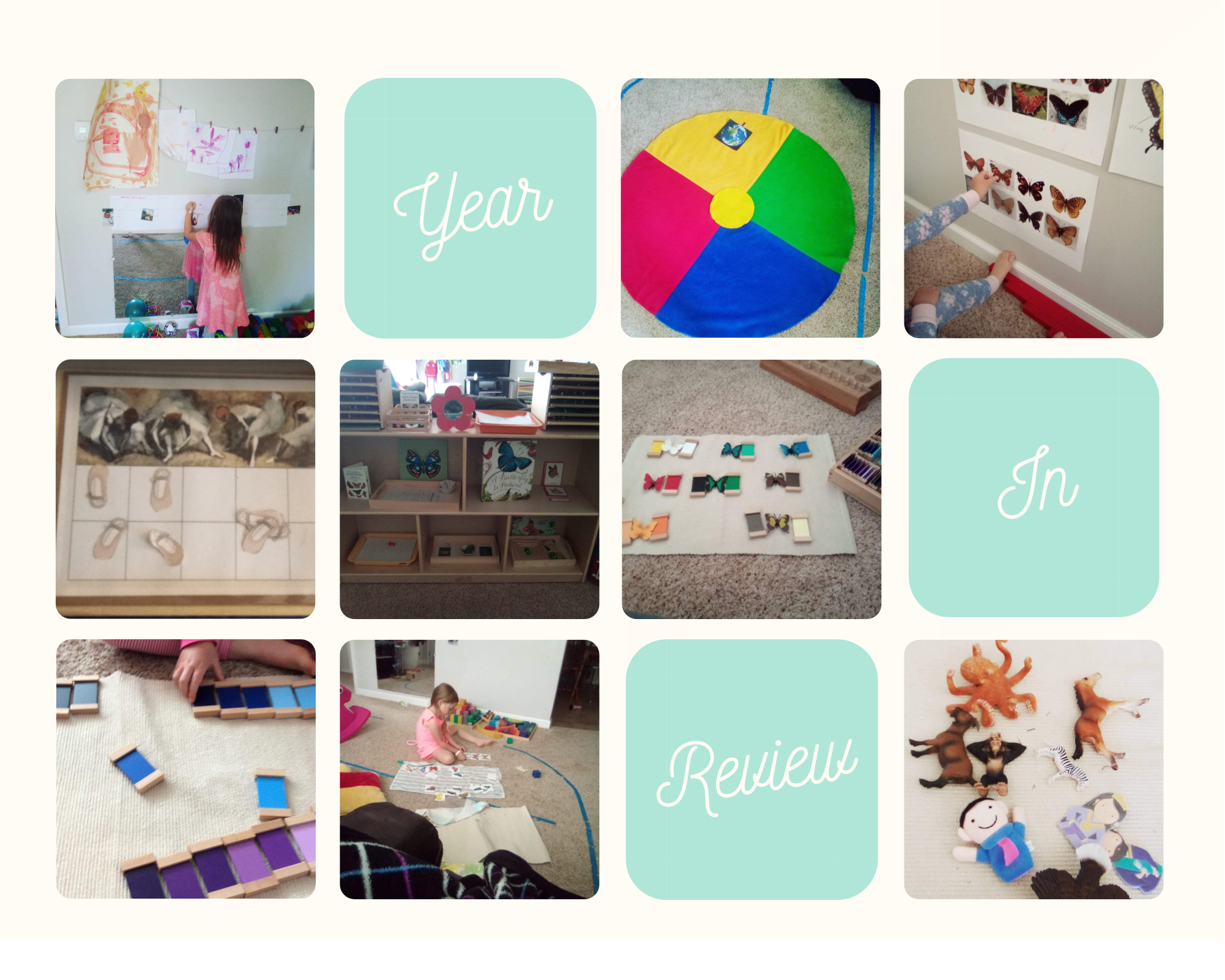
I can’t believe it is already time to put together our Year in Review! We have had so much fun this year. We wrapped up our first full year in the 3-6 Montessori materials officially this past March and I am putting the finishing touches on our tracking tool/portfolio. AND I am already in planning mode for the next 6+ months in our homeschool! We truly do go year round so this year, I am embracing it. We love our rhythm and routines over here plus we really love learning. It’s truly an all the time thing. Children are absorbing everything around them. Exploring. Taking it in. Even when we were not “officially” tracking last year, we did quite a bit over the summer and started our official school year early. SO… why fight it? Year round homeschoolers have the most fun, right?
This year we got to do so many fun things in our homeschool preschool. Here’s a look at what we did from the end of July 2020-May 2021. If you are new to the Montessori Method, check out this great overview on Info Montessori. Our daily routine shifted a bit from last year. Little Miss weaned and while we still cuddle in the morning, it’s not a part of our routine. Most weeks we hold space for the morning work cycle 4-5 days a week. We aren’t always home for the afternoon work cycle. Sometimes we will do a play date or an activity in the afternoon.
- Wake + Morning Routine (Breakfast, supplements, brush teeth, get dressed)
- Morning Work Cycle
- Lunch
- Quiet Time (Quiet Play for Little Miss and Nap for Littlest Miss)
- Afternoon Work Cycle
- Dinner
- Evening Routine
In Montessori, there are four main subjects: Practical Life, Sensorial, Language, and Mathematics. Cultural is a subcategory of language but it has taken on a life of it’s own in our homeschool. We also hold space for Bible study so I am giving both their own categories in this year in review. At the end of the post I will list the themes we incorporated this past school year. Click here to check out an overview of the {free} curriculum we use in our home.
Practical Life
Practical life plays a large roll in the 3-6 Classroom. It is here where the child learns not only how to do tasks that are necessary, but tasks that she is drawn to. Tasks that enable the child to become independent and to have purpose. This draws the child in and allows the child to grow in their ability to focus. To grow in their fine and gross motor movements. It prepares the child to write by strengthening the hand. Practical life is SO much more than a set of tasks. Fun. Practical. Purposeful. Ever wondered why practical life work is a part of the Montessori classroom? Check out this post.
This year on the shelves we did: tweezing, basting, pasting, and tonging. This year I noticed she shifted from being interested in transfer work so these did not make it to the on the shelf often. Most of the practical life we do is off the shelves. We did LOTS of cutting and slicing in the kitchen. She loves making her own smoothies, baking, and getting her own snacks. I reintroduced pin punching and she really got into that towards the end of the spring. We also have pasting, gluing, cutting and snipping works available often. Care of the Environment and Care of Person are also a part of the Practical Life Curriculum. She has mastered taking care of herself! She is so independent in the mornings that she just goes from breakfast to getting ready and begins her work cycle (often without me- ha!) I just wait for a break in concentration to do circle time or a new presentation/modeling. To see the full scope & sequence of the Practical Life Curriculum click here, here, or here.
Here’s a few photos of Practical Life Work in action this year:
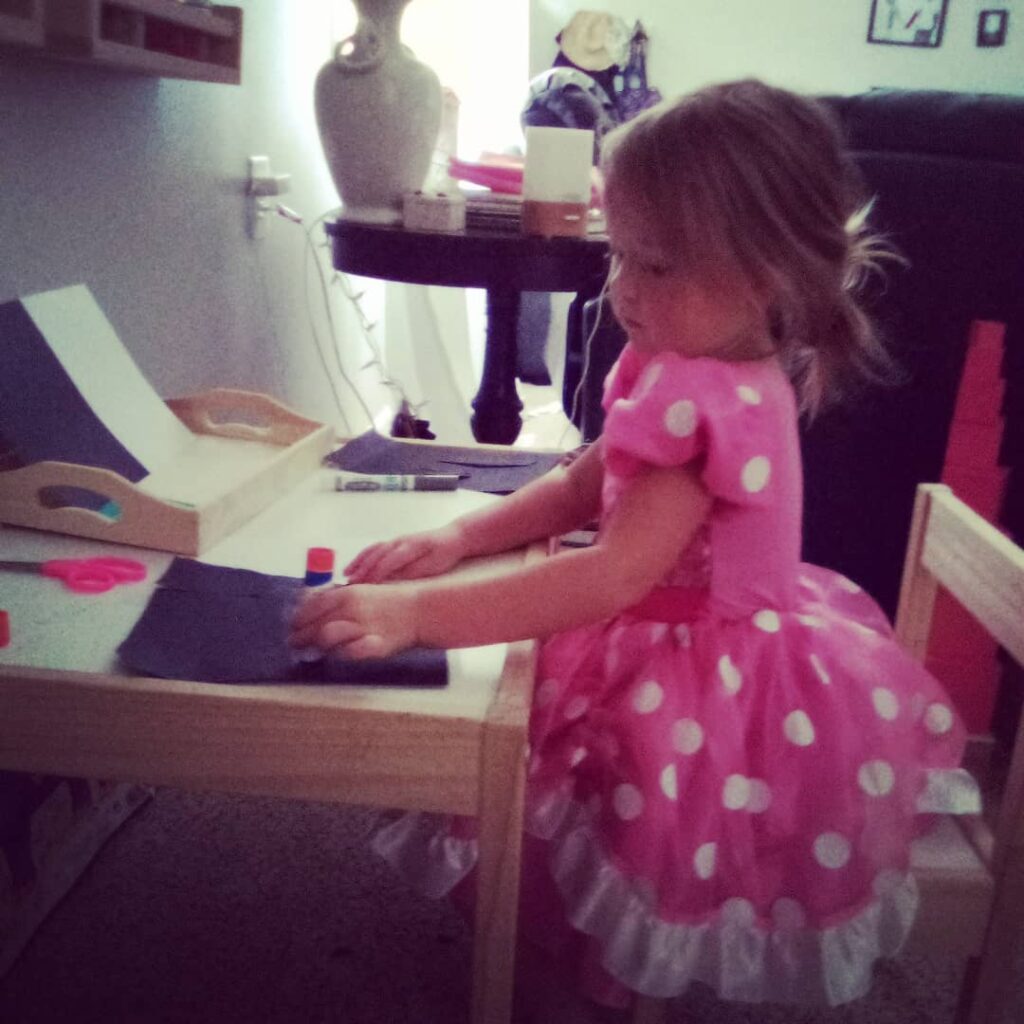
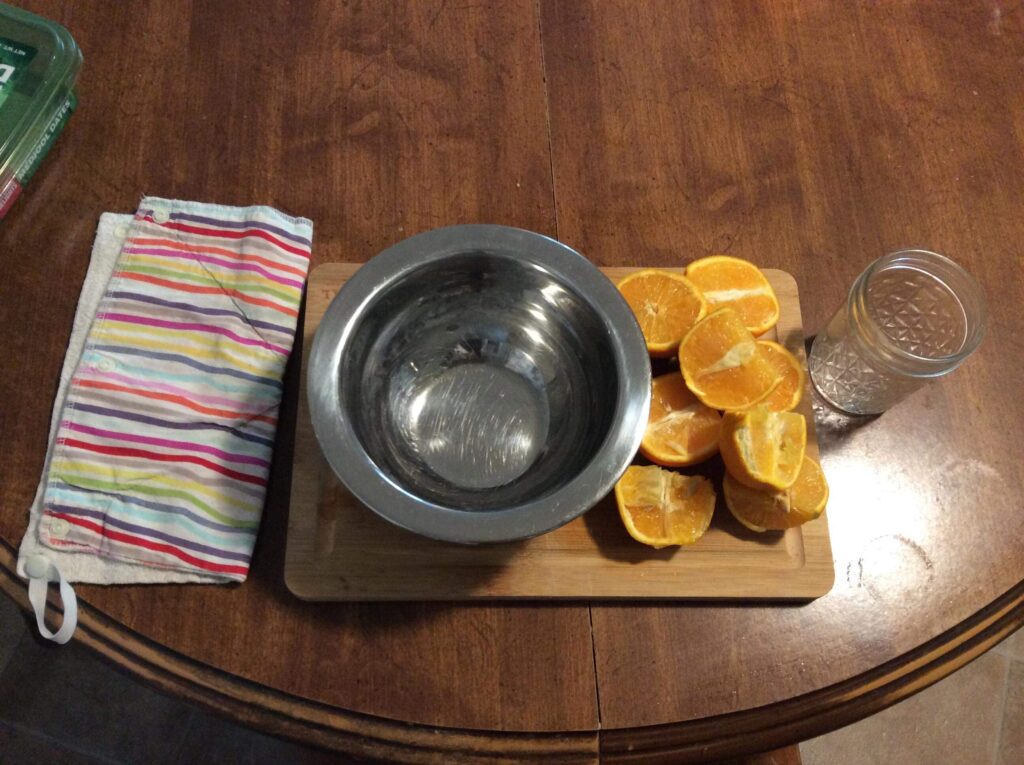
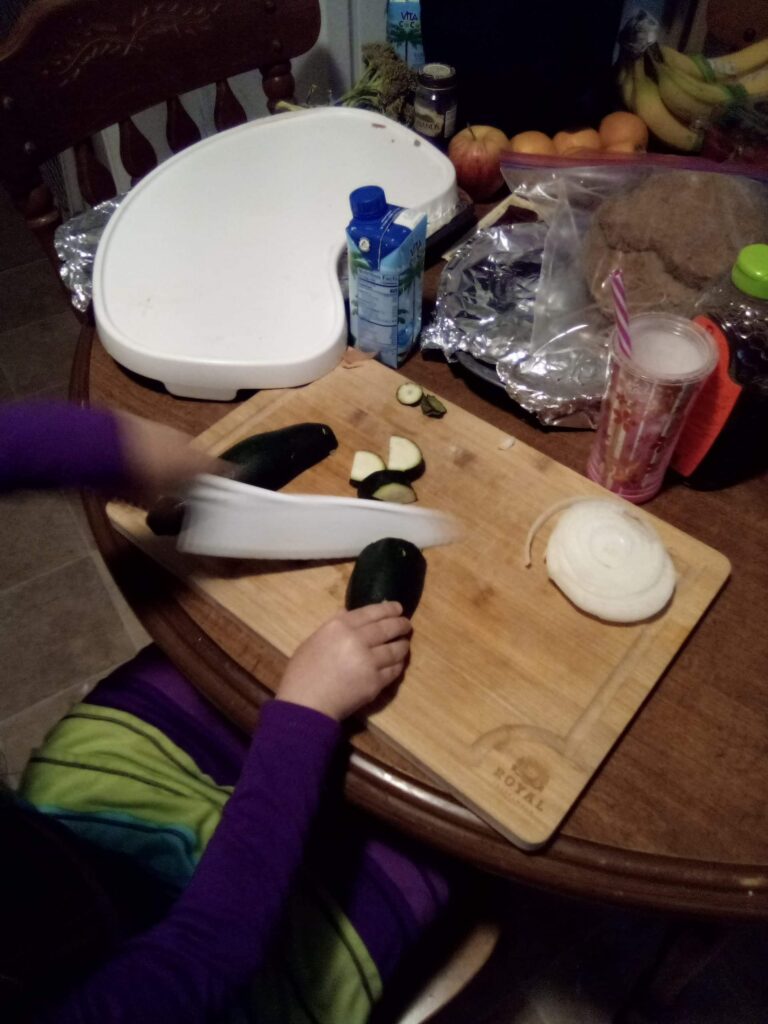
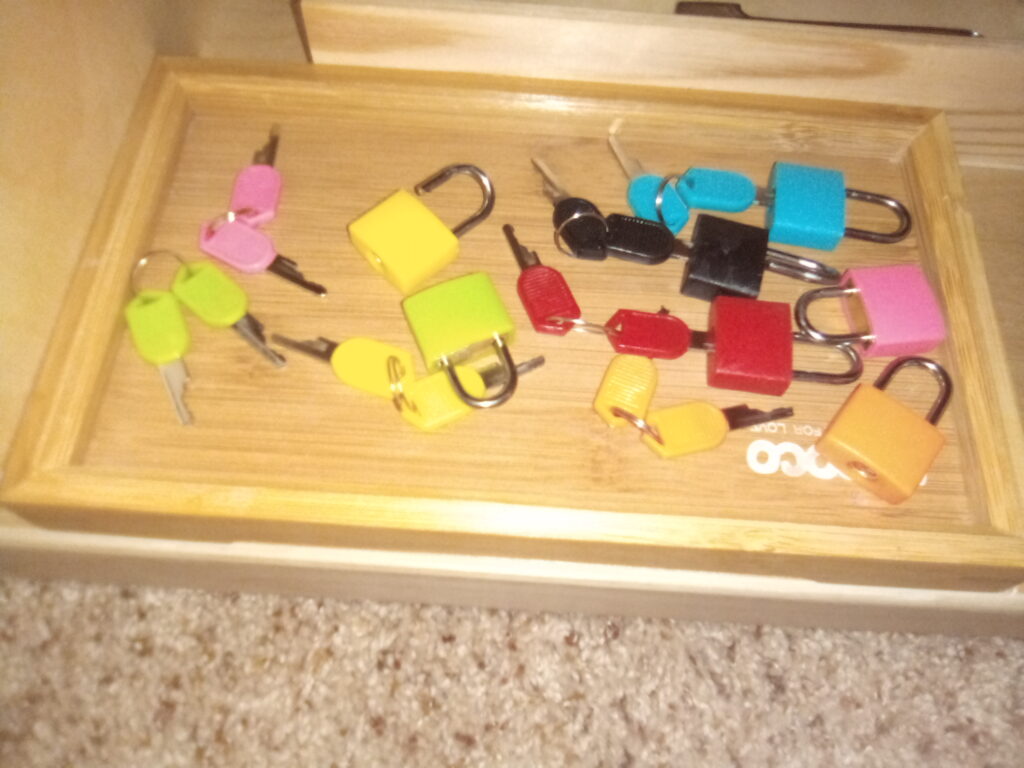
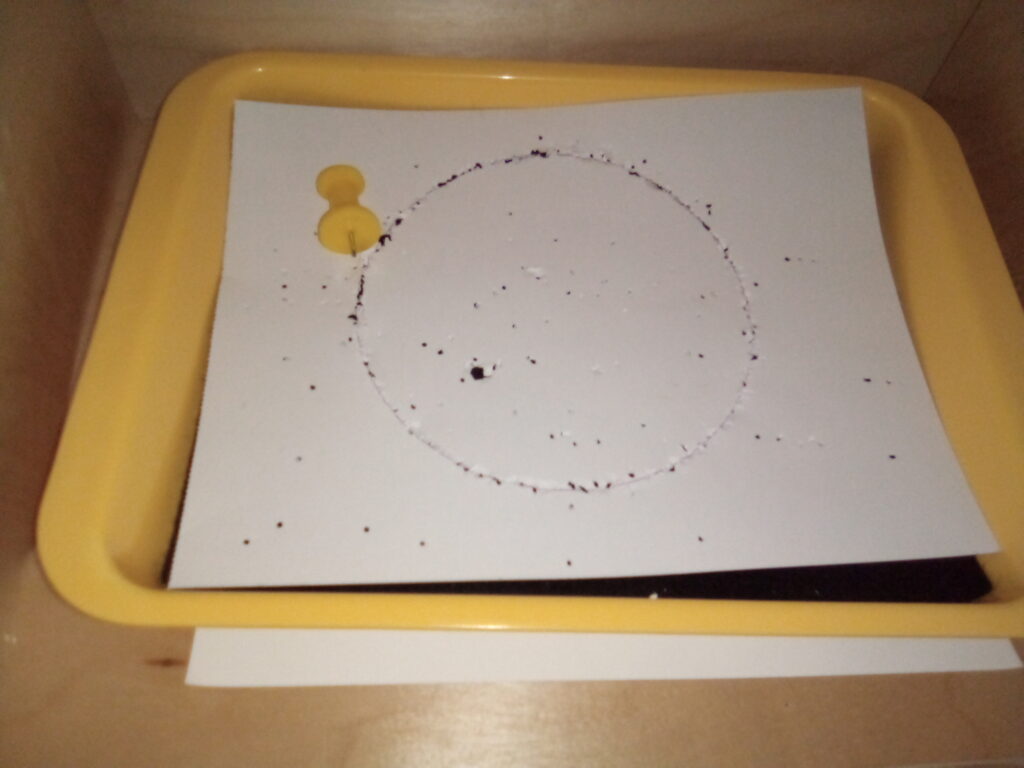
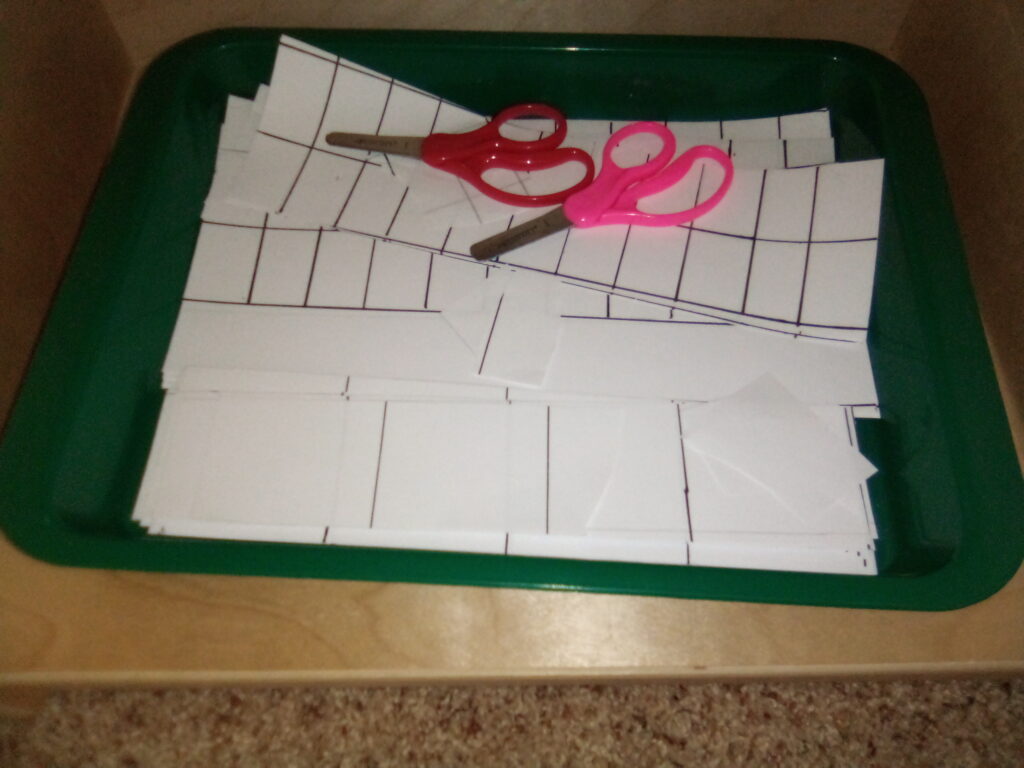
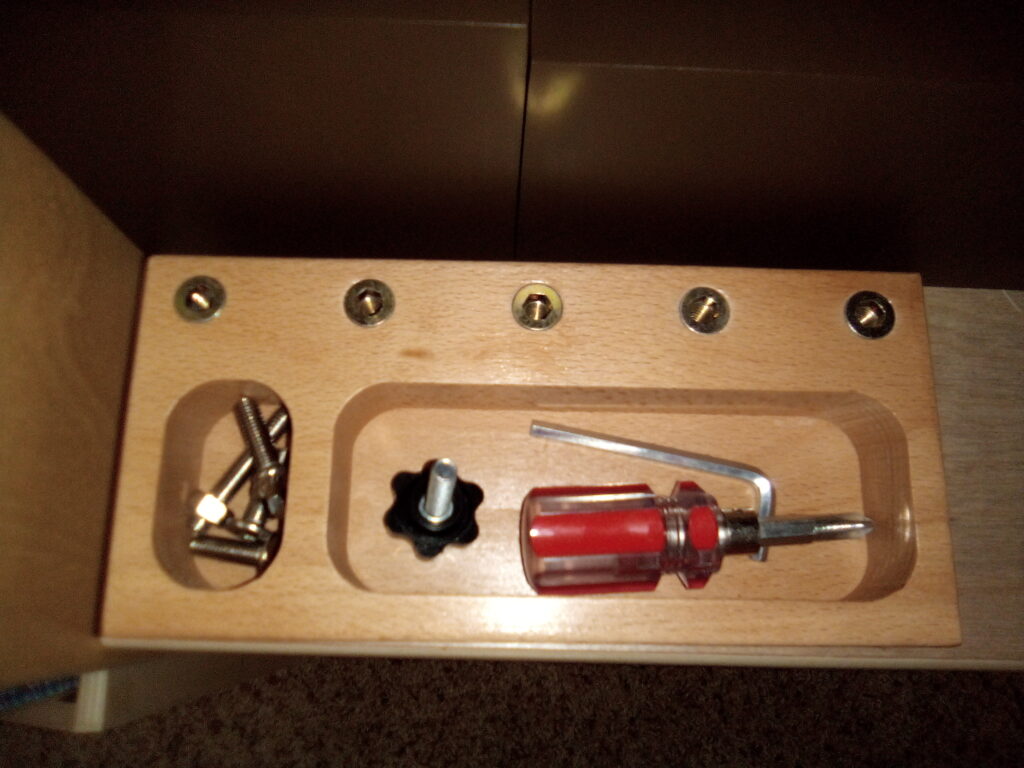
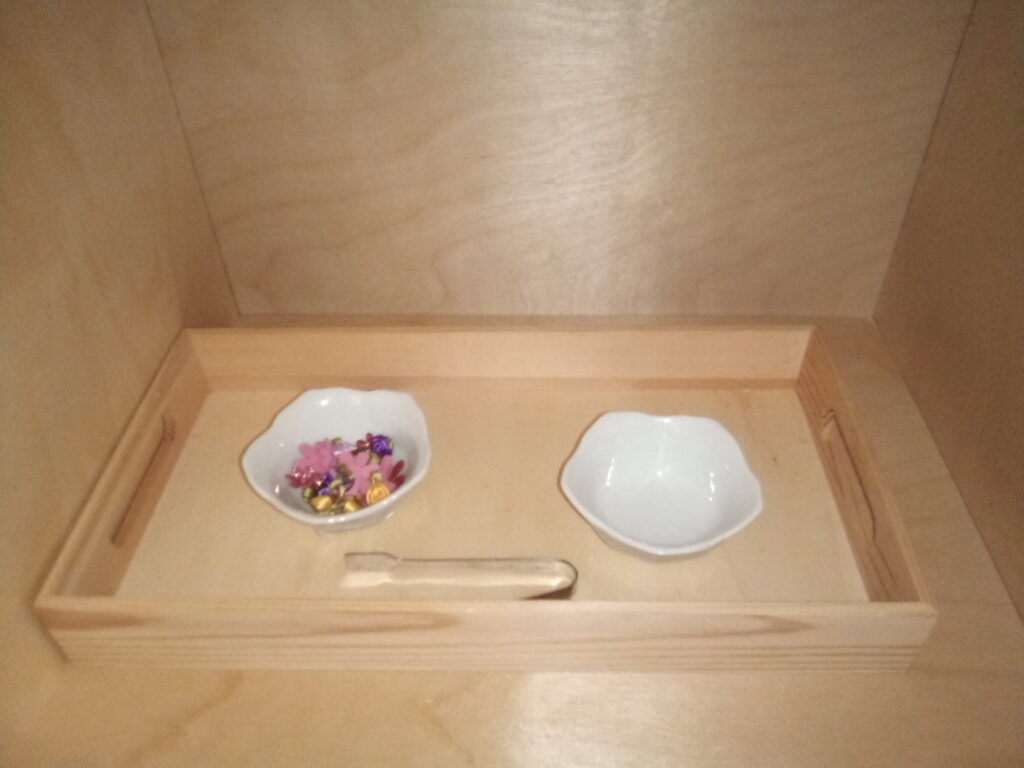
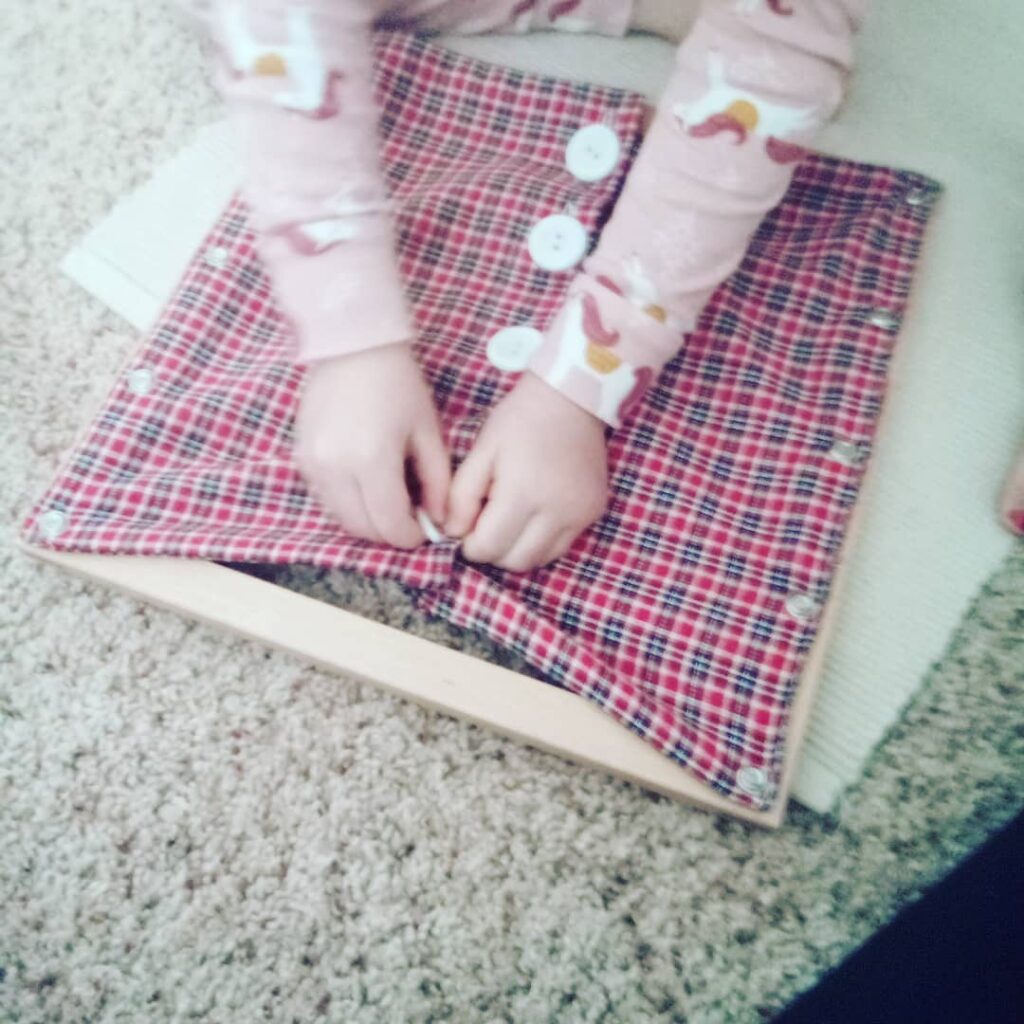
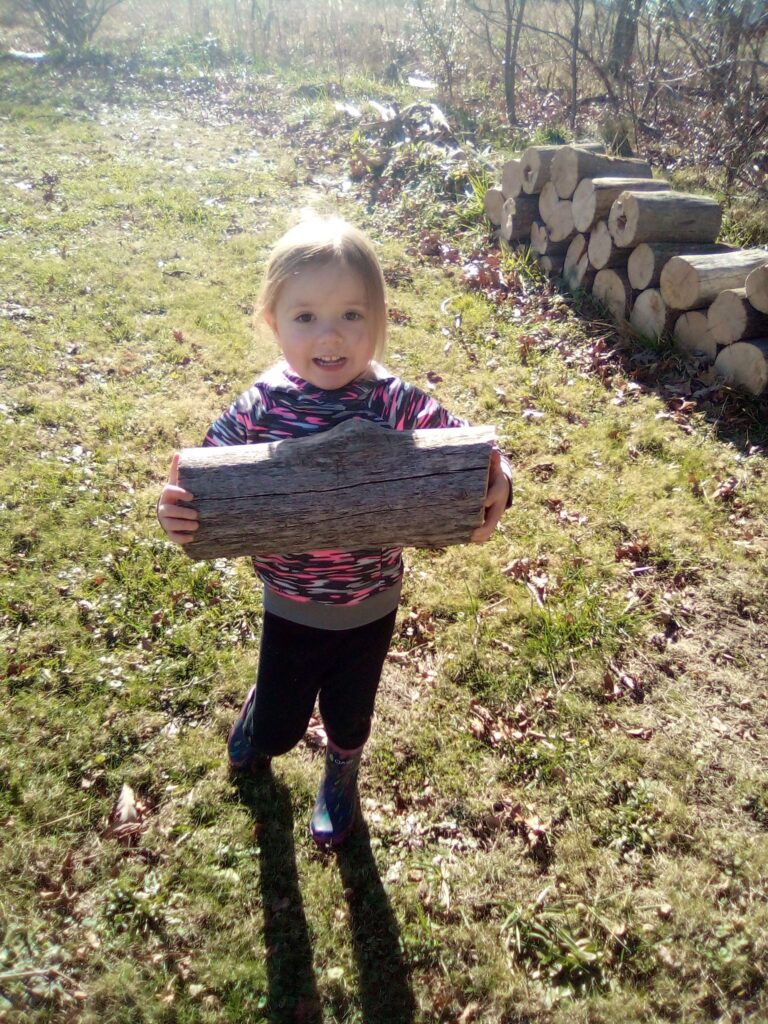
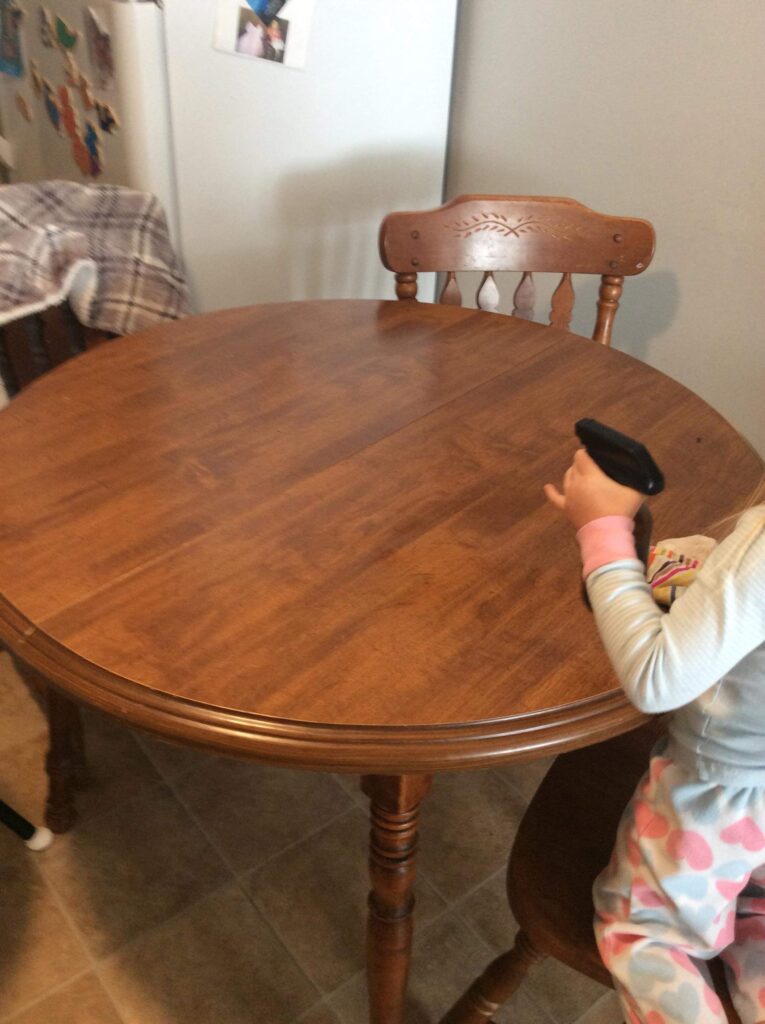
Sensorial
The Sensorial Curriculum serves to engage all the senses and indirectly prepares the child for math, science, reading, and writing. The child will learn to differentiate objects based on size, color, shape, feel, weight, temperature, sounds, smells, and tastes. Some of this curriculum we chose to purchase but for the gustatory sense, olfactory sense, auditory sense, and thermic sense we chose to either DIY or use organic exposure in the environment. Some of this curriculum we started in “Tot School” (Same for practical life!)
This year on the shelves we did: cylinder blocks, pink tower, brown stairs, red rods, color tablets, geometric solids, mystery bag(s), sandpaper globe, and continent globe. We did one extension with these materials but plan to do more! Off the shelves we explored our olfactory and gustatory senses through tasting and smelling items in the home. Examples of this are essential oils, fresh herbs, flowers, fresh squeezed citrus, and different types of food.
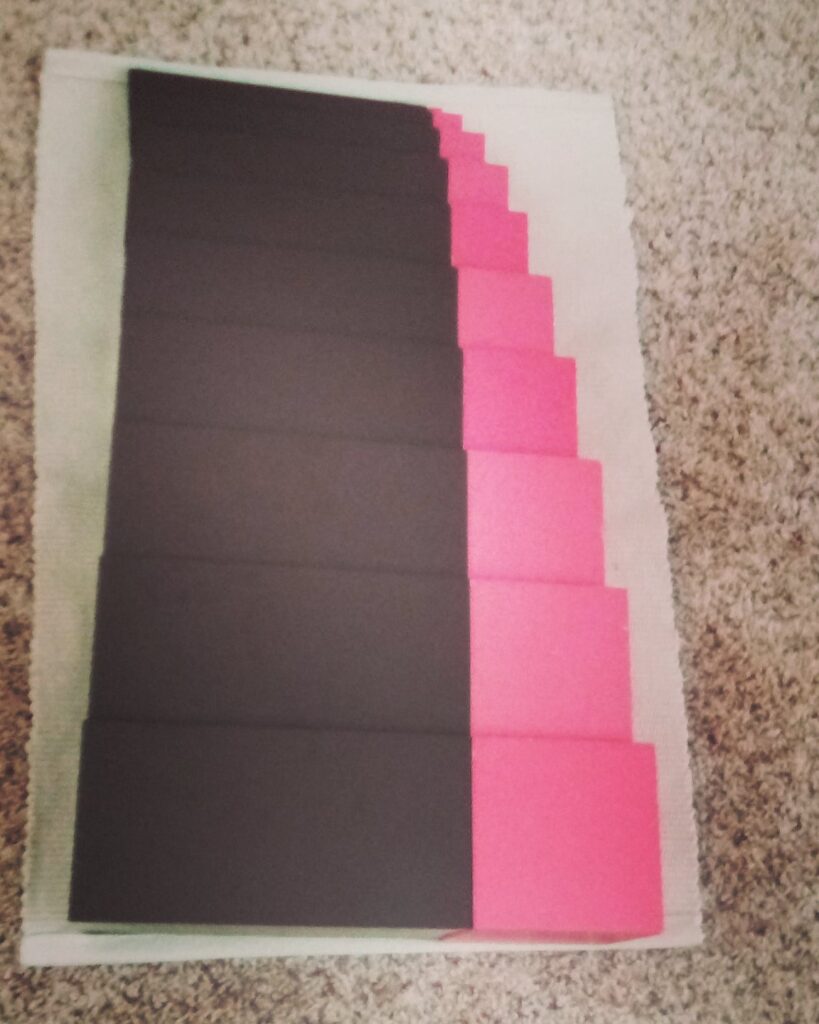
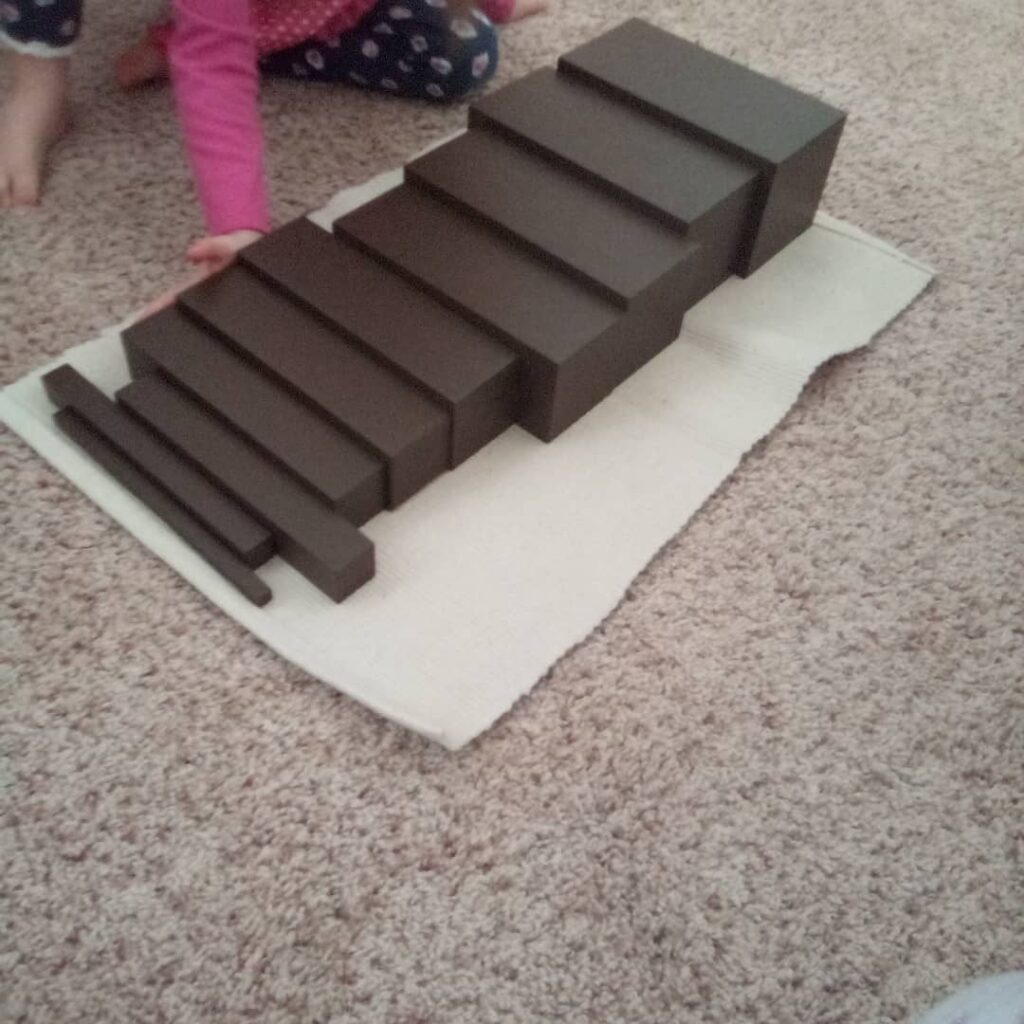
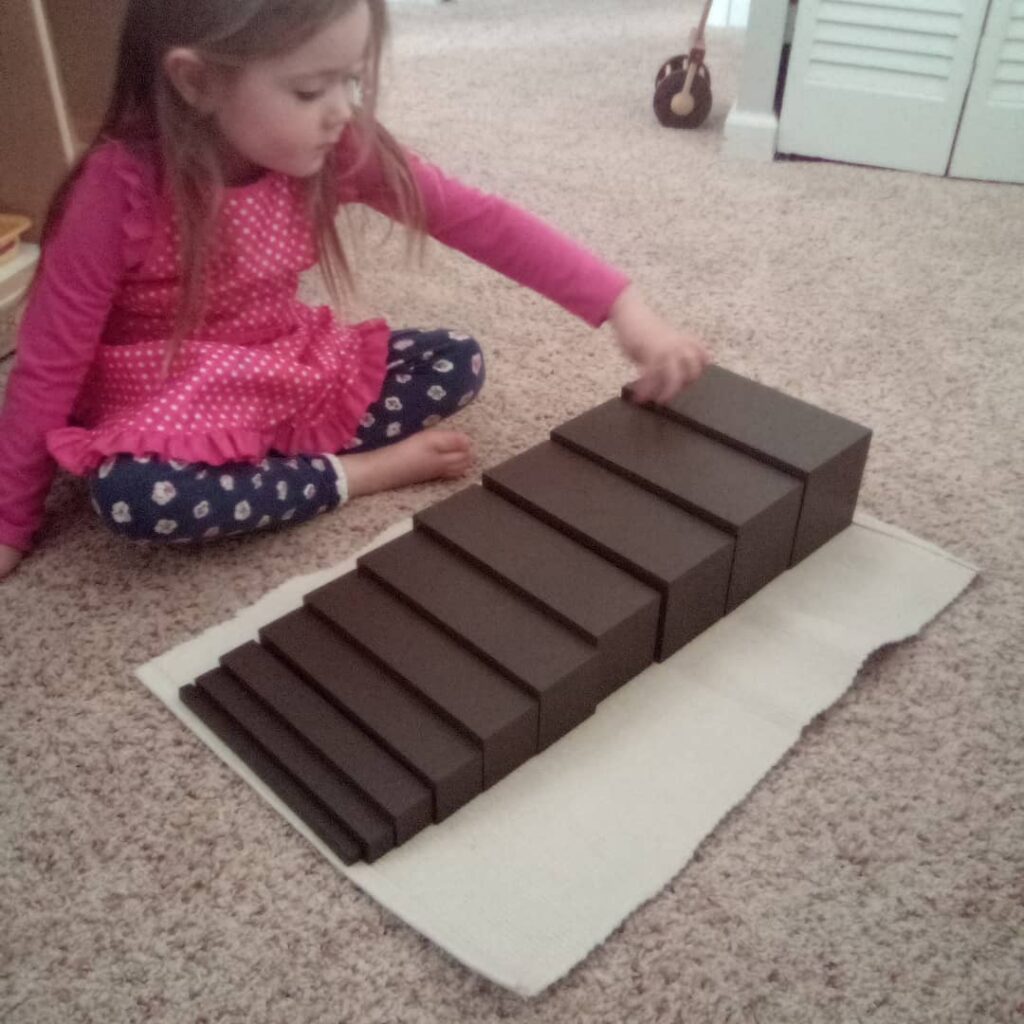
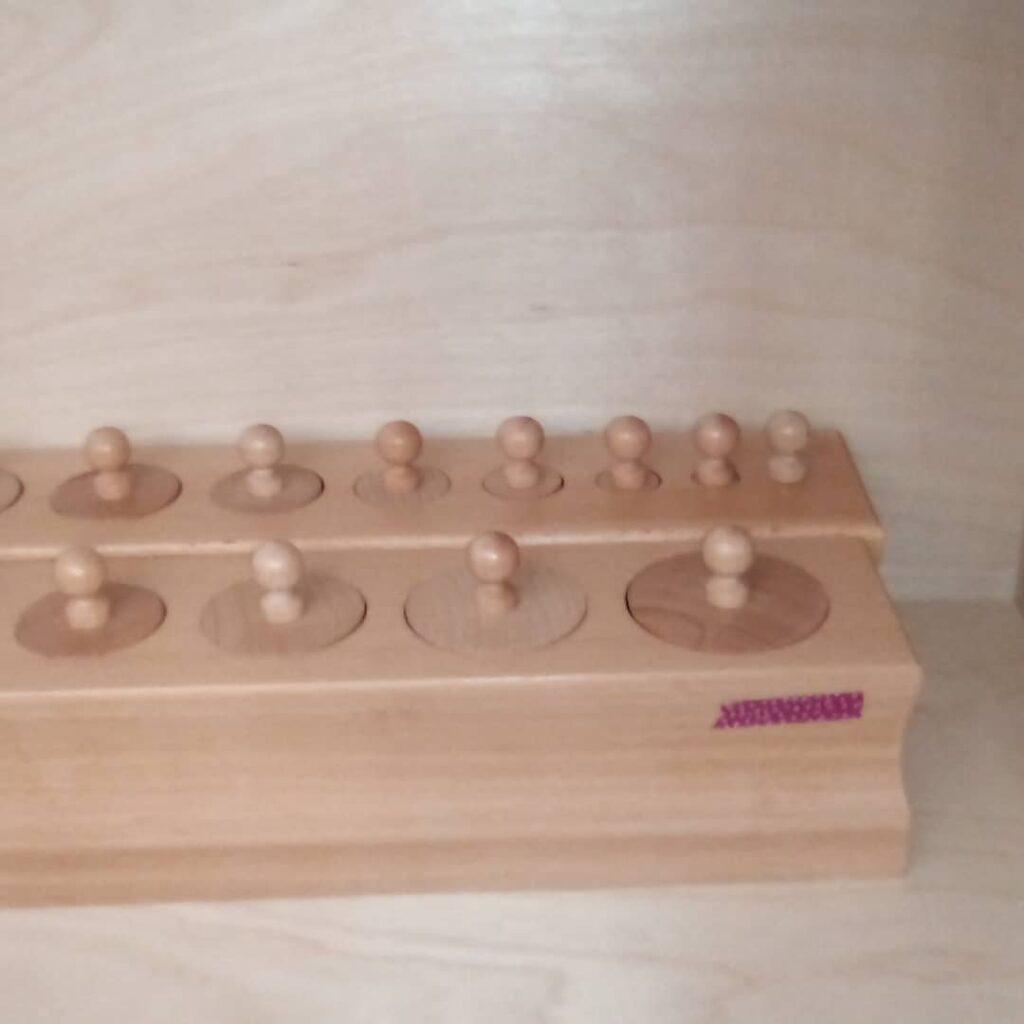
Language
The language progression in Montessori 3-6 begins with preparing the hand for writing and preparing the ear for noticing sounds. Building language is done through new experiences, new works, language objects, 3 part cards (also known as nomenclature cards), reading together, story telling, singing songs, reading poetry, and saying fun rhymes. Phonetic awareness begins alongside of building language. Initially it is quite organic. Noting sounds in words as you walk outside (g-r-a-s-s, grass. I hear a /g/ sound at the beginning of grass), as you get dressed for the day (b-r-u-s-h, brush. I hear a /b/ sound at the beginning of brush. Do you hear it? b-r-u-s-h), or even as you play (B-l-o-c-k, I hear an “aah” sound in the middle of block. Do you hear it? b-l-o-c-k). Then you move to introducing the sound games. There are five levels of sound games or phonetic awareness activities that the child will work through during the 3-6 Montessori Scope and Sequence. We are working on beginning sounds right now and this spring they have really started to stick. We will lean into this and introduce the sandpaper letters within the next few weeks.
Here are some photos of our language work this year:
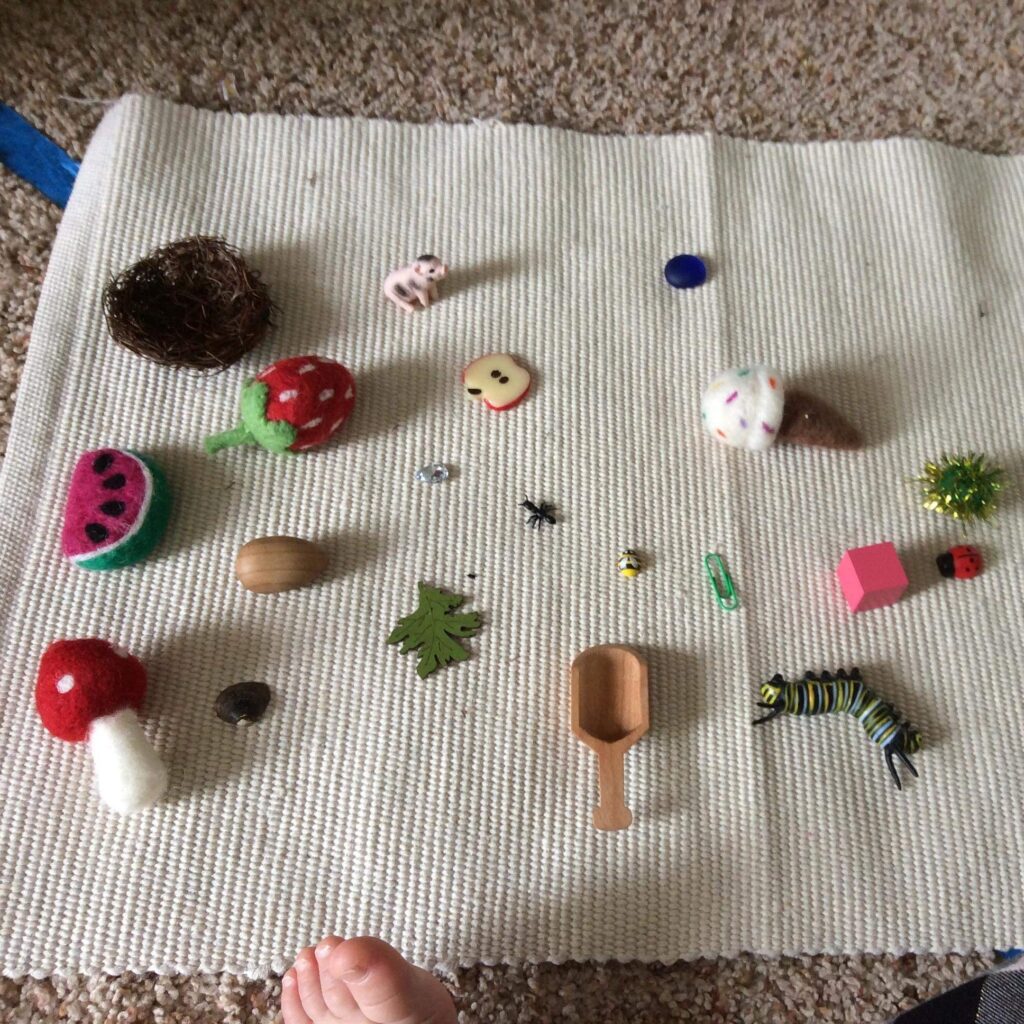
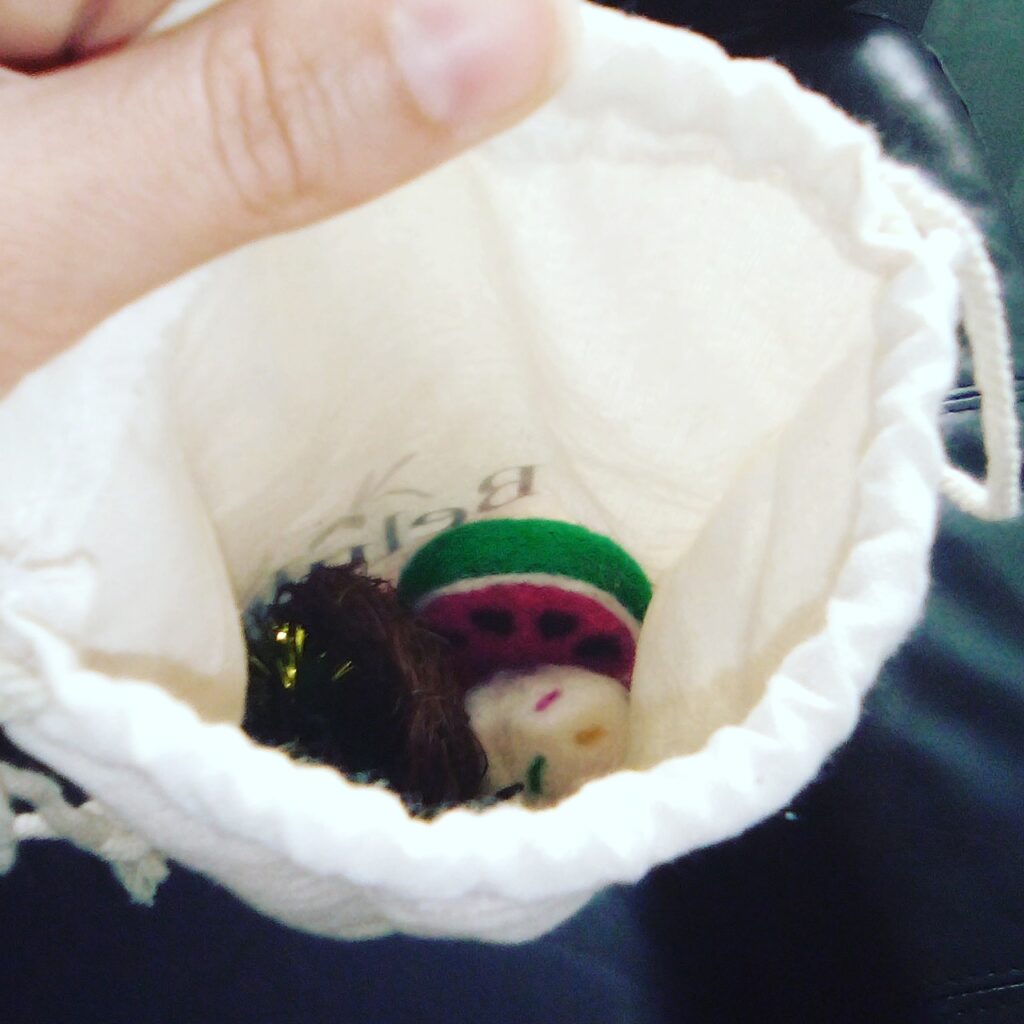
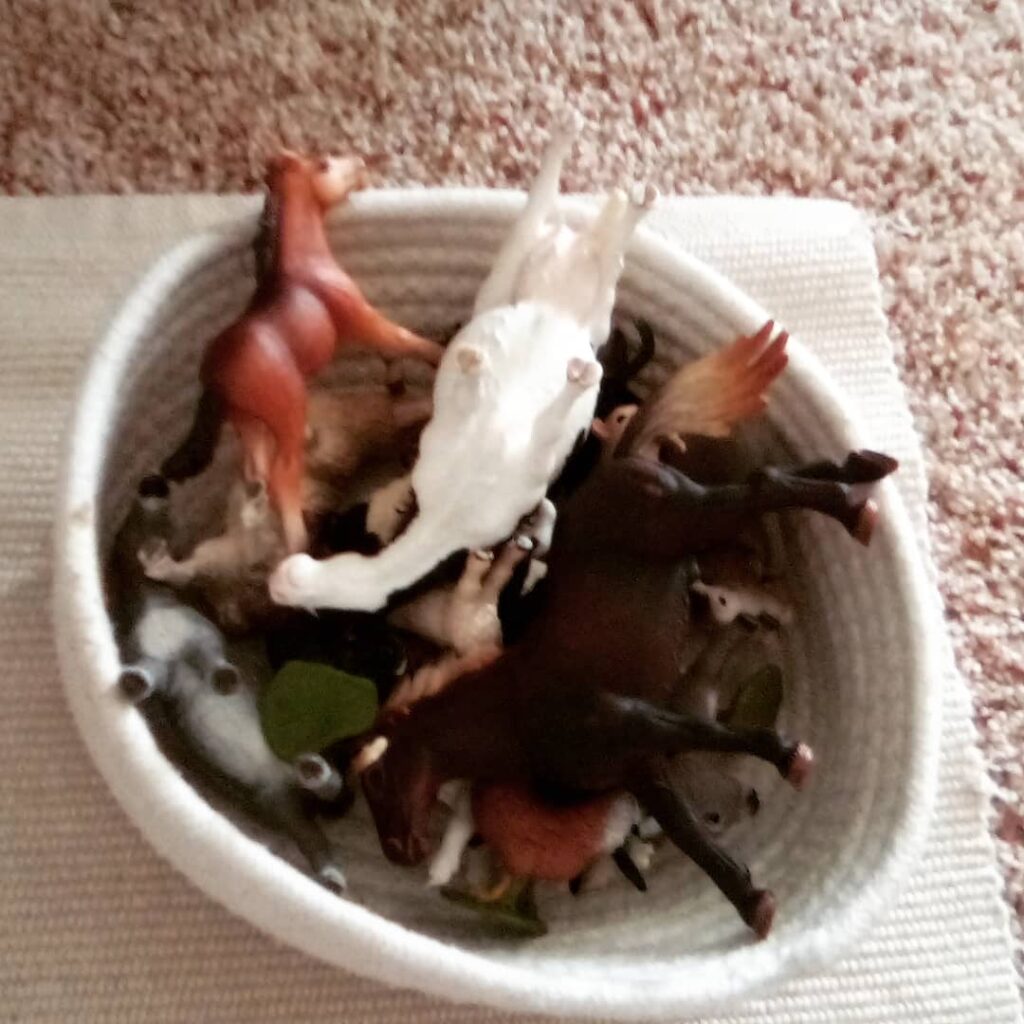
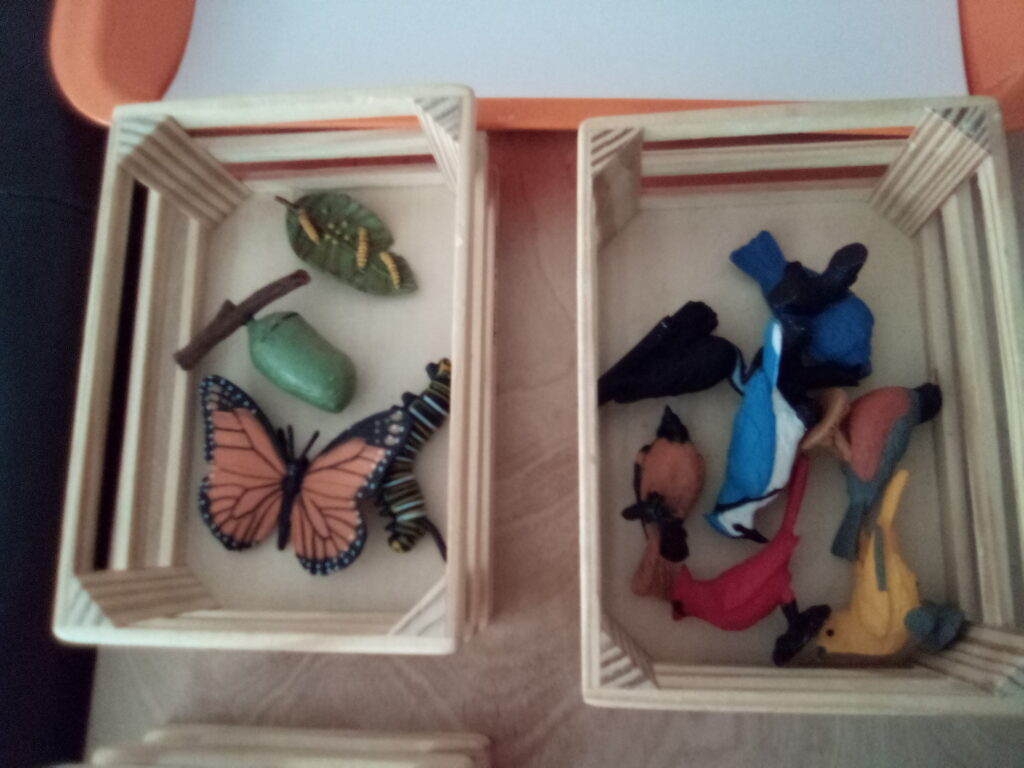
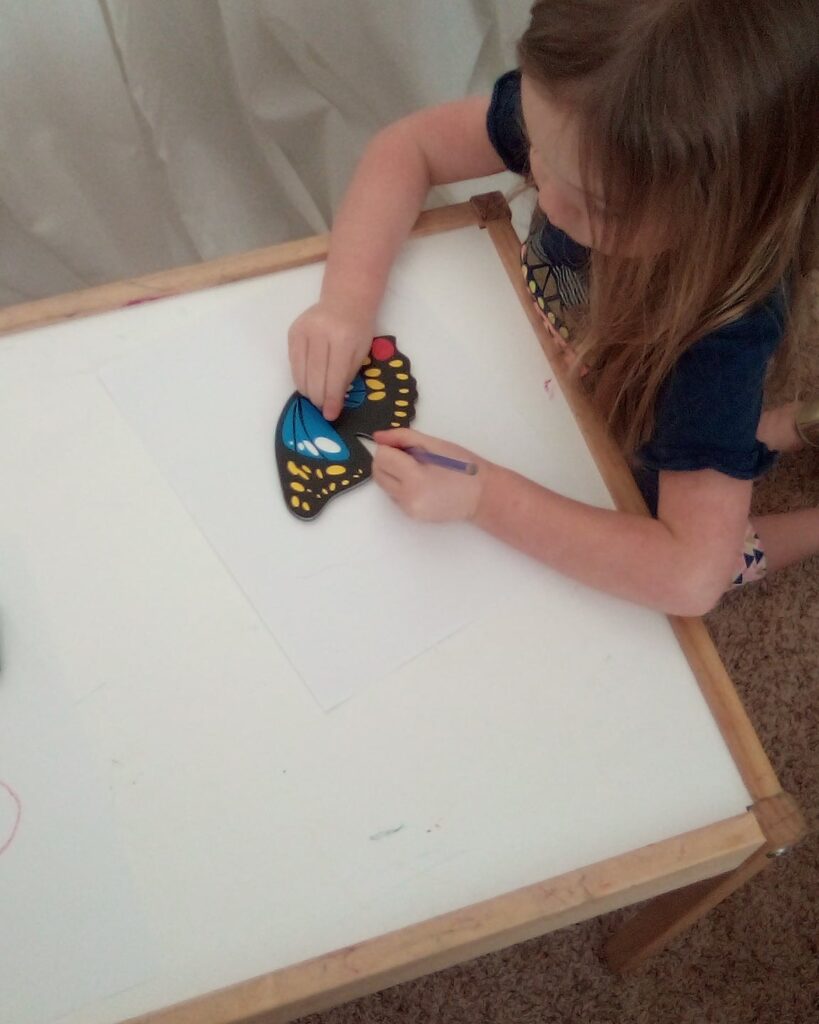
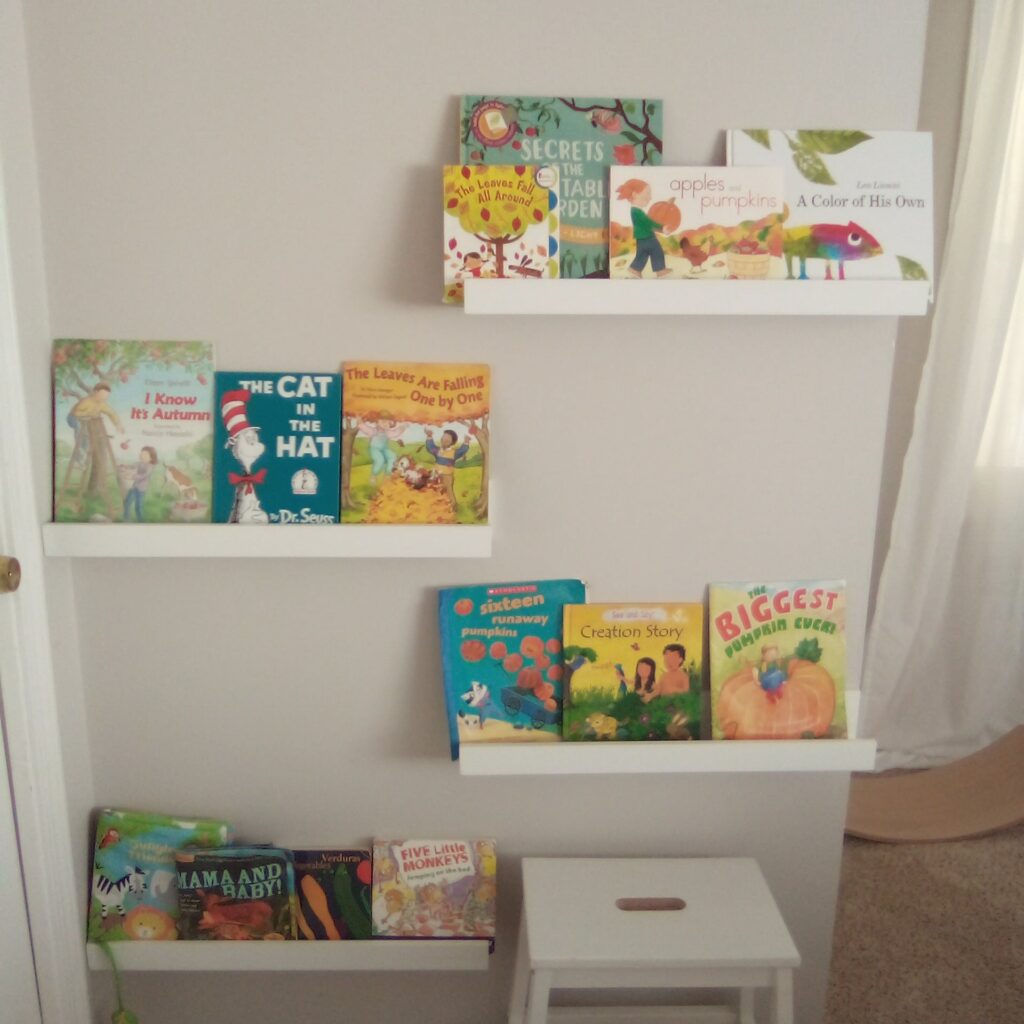
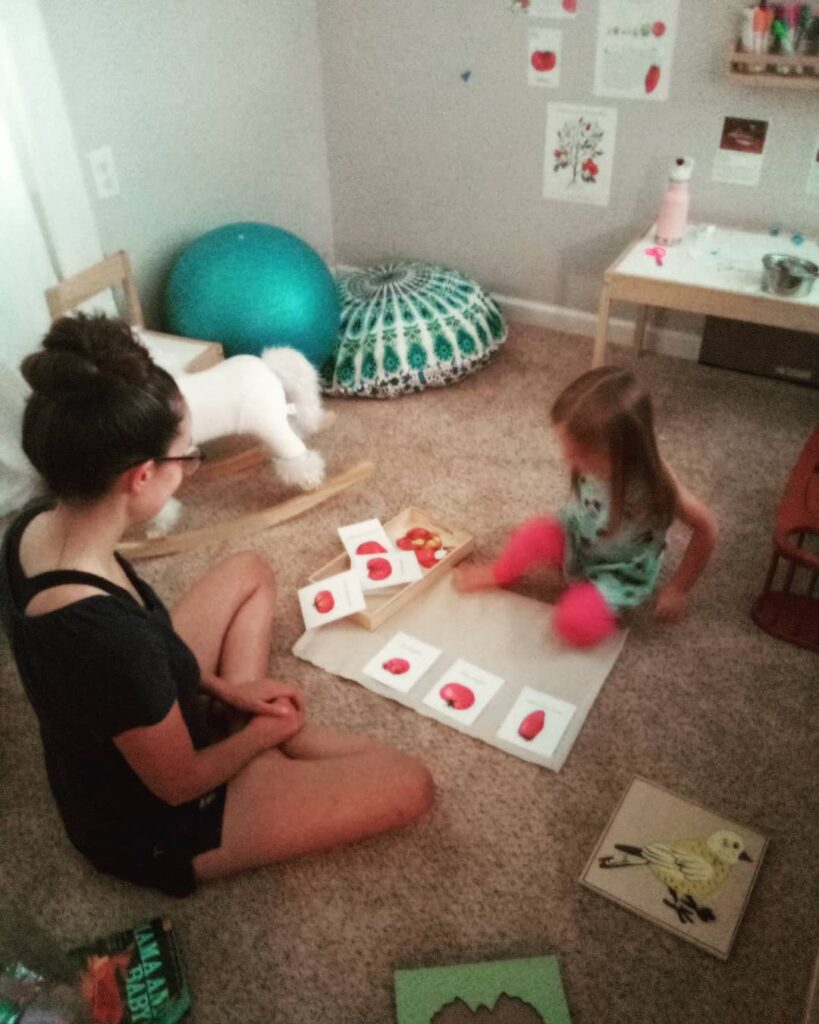
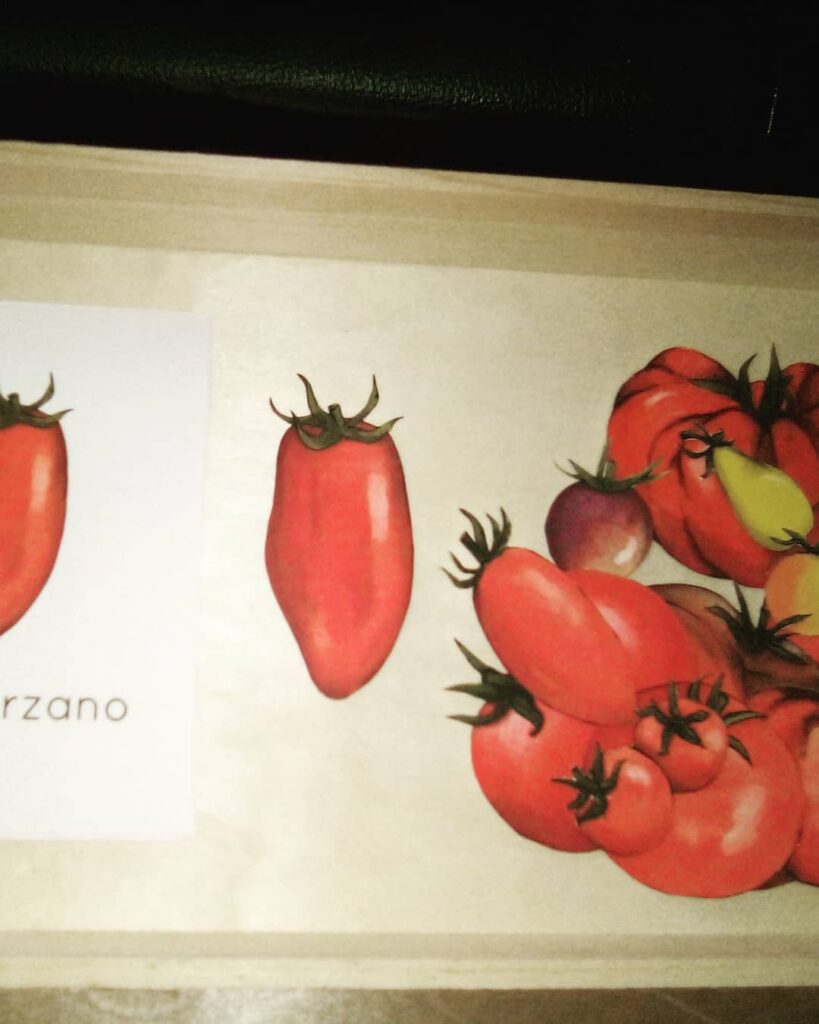
Mathematics
In Montessori we start with the concrete and move towards the abstract. Instead of starting with the abstract symbol of a number to introduce quantity, it is taught organically through counting and experiences prior to the official introduction of the math materials. We have had exposure to the number symbols naturally but we haven’t put an emphasis on remembering which number symbol represents what quantity. Instead, we are focused on counting quantities. We also count our steps, or count to 20 (for example) when playing hide and go seek. We do the board book, “Number Works”. We have also had a few forms of DIY cards and counters on our shelves with themes, but these have not held our child’s interest for long. Once the newness of it wears off, she moves on and I rotate it off the shelves. We’ve worked on the language of ordinal numbers a bit but language exposure was more the goal than memorization. The red rods precede the first physical math materials in the Montessori sequence: the number rods. We are currently working with those. I expect to introduce the number rods over the summer. We shall see!
Here are some math works that made it to our shelves this past year:
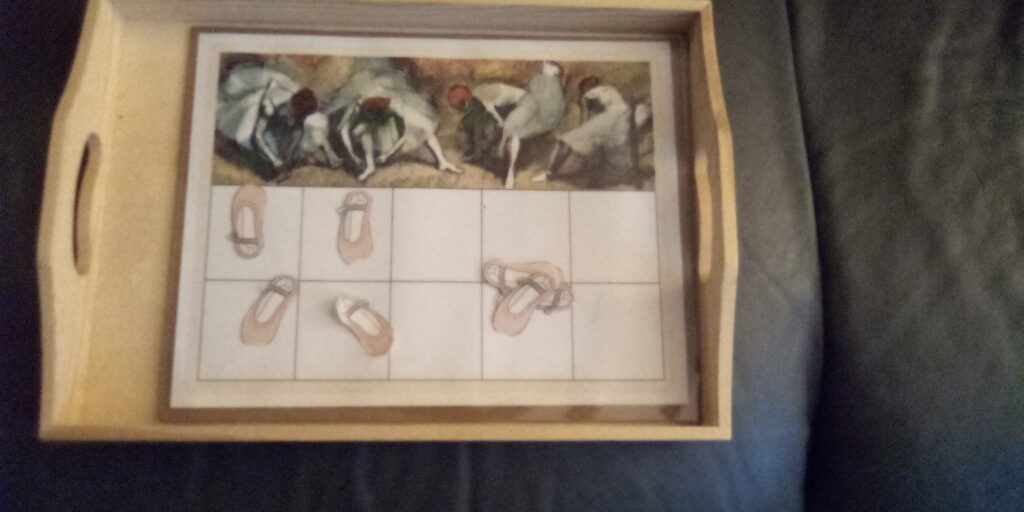
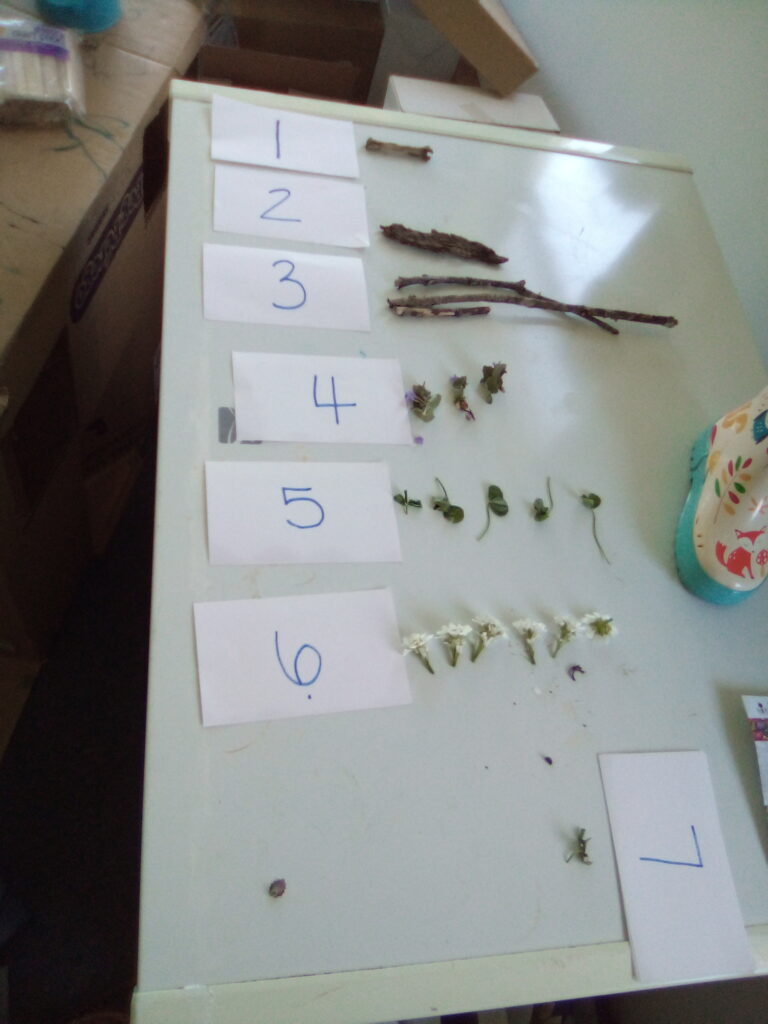
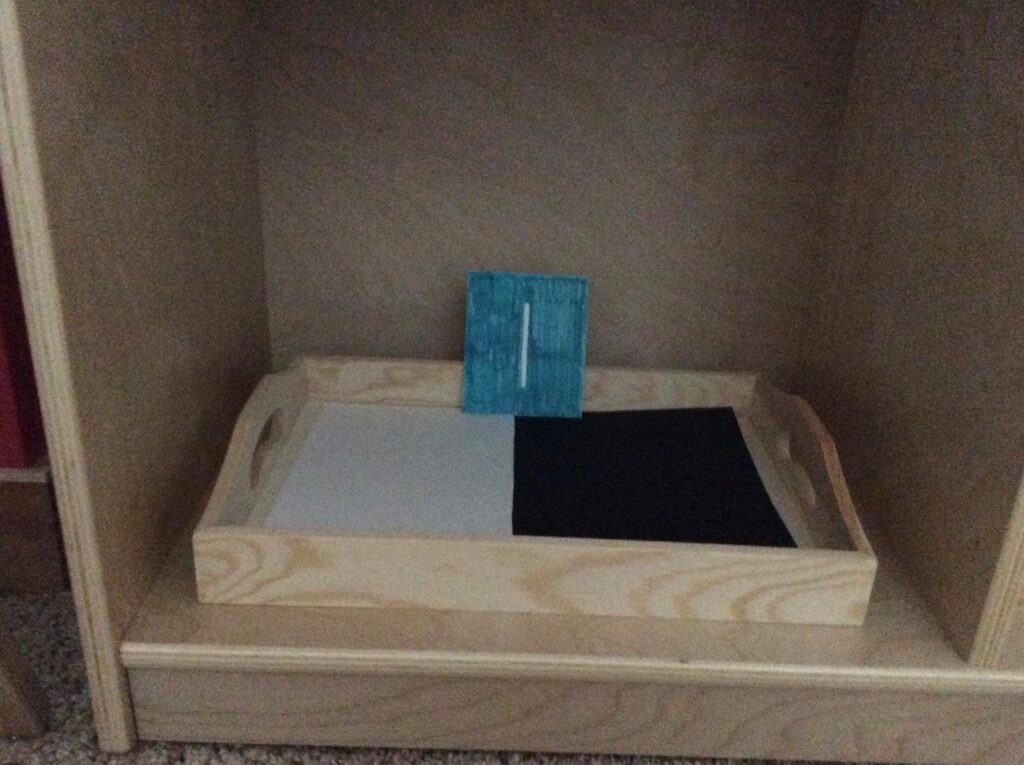
Cultural
The Cultural Curriculum is actually a part of the language curriculum but it encompasses quite a bit so I have opted to give it a separate category. The cultural category includes: art, dance, music, Geography, History, Science (Physical, Biology, Zoology, Botany), Peace Curriculum, Spanish, and in our home Bible.
Art
Montessori art is a bit different than what one expects when they think of an “art curriculum”-especially under 6. Instead of having an arts and crafts sort of experience or an adult directed art project, the child is given materials to create with. When a material is introduced, the guide will model the correct way to get the materials, work with the materials, and return it to the shelf. After this the child is free to work with and create with the available materials. Available on our shelves are: pencils, markers, crayons, play dough, paint (water color, regular, and finger paints), drawing paper, water color paper, paper on the easel, paint brushes, paint trays, scratch paper, and dot markers. Our child loves drawing and painting and spends part of her work cycle choosing these activities regularly. In addition to this I might add cutting work or pasting work to the shelves.
Music and Dance
Music and dance are explored and encouraged in our home. We sing lots of fun songs from little rhymes to praise songs. We’ve listened and danced to many genres of music. We’ve explored instruments in the home (we have a piano, keyboard, guitars, and small instruments to play with at this time). Dance is mostly free dance in the home but our daughter has chosen to learn tap and ballet at this time. She goes to dance once a week. We also did a fun dance unit this past year.
Geography
We are just now starting to scratch the surface of the geography curriculum. We’ve explored land, water, and air as well as sinking and floating. I am working on some DIY’s for the Place in Universe lesson, the sandpaper globe, land forms and the continent globe currently. We are currently working on this in our homeschool at the close of the 2020-2021 school year. Like I said, just beginning to scratch the surface!
History
This year we did the introduction to history lesson and had a history table to add to for a while. We’ve worked on the days of the week (we love this song), the concept of yesterday, today, and tomorrow as well as past, present, and future. We’ve kept most of our calendar exploration to the timeline (see picture below) to emphasize the linear nature of time. We have used the Montessori seasons mat and the beaded representation of the days and months of the year as well. We also just did our Annual Walk around the Sun and the personal timeline for our oldest!
Science
In the science curriculum this year we’ve explored living vs. non-living, butterflies, birds, flowers, insects/bugs and have done lots of hands on activities inside and out! In addition to that we have utilized parts of the insect or animal puzzles, three part cards, language objects, and books!
Spanish
We honestly have not done much Spanish work this year. We have worked on colors and number names on and off but there is not much interest there yet. I might actually switch gears with our second language and explore Greek or Hebrew as Daddy is learning those in seminary and this seems to be of interest right now with our girls. I may switch language focuses next year. I am back and forth.
Here are some Cultural Works that have been on the shelves:
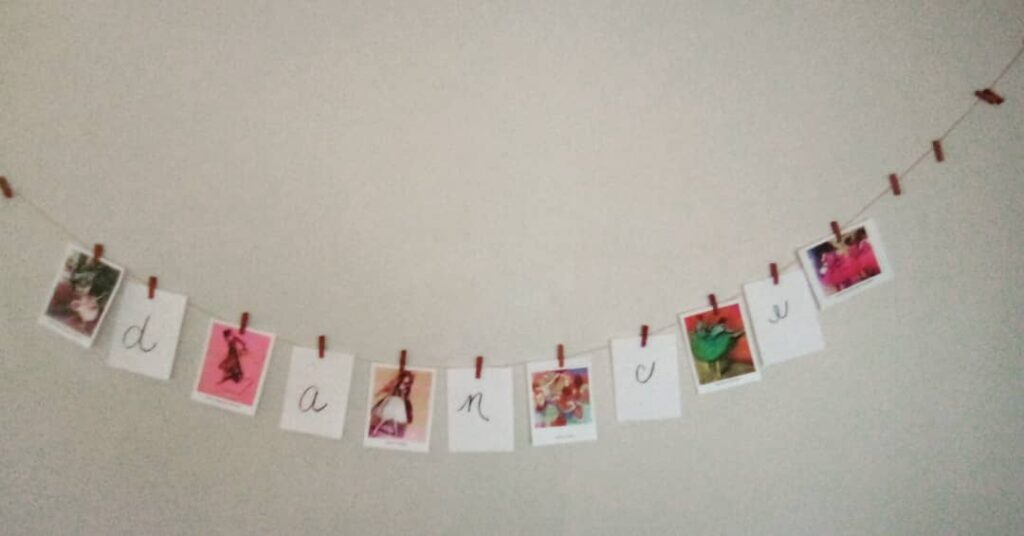
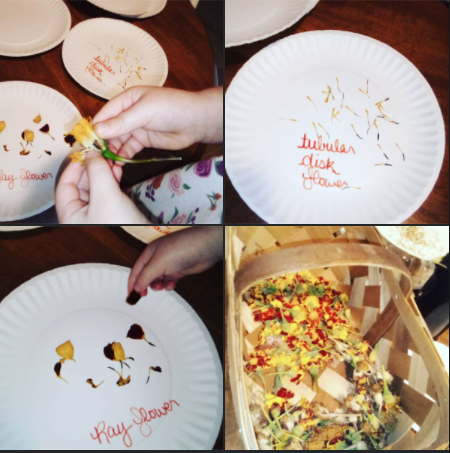
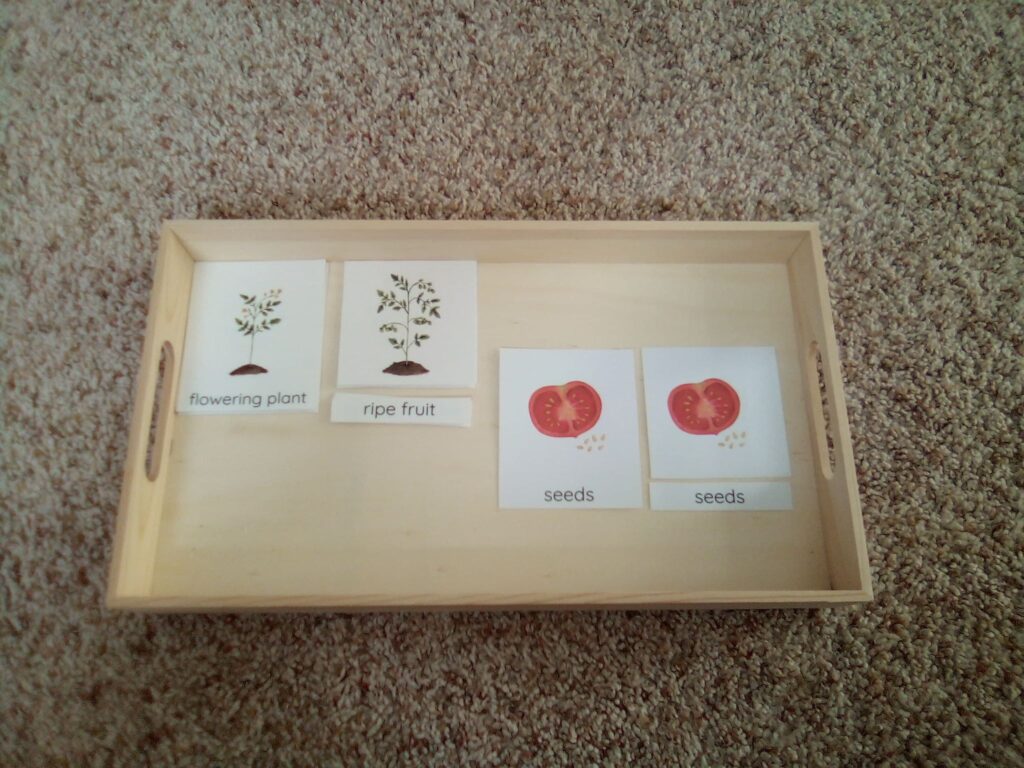
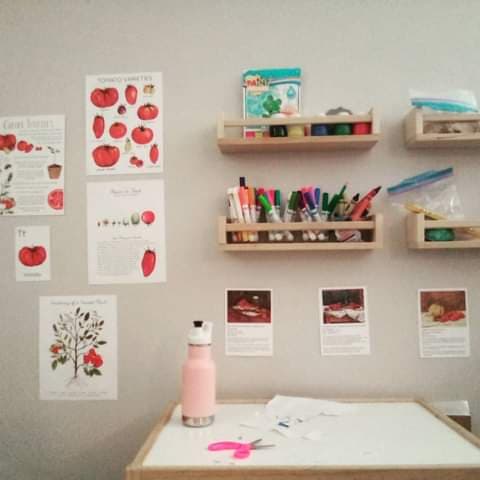
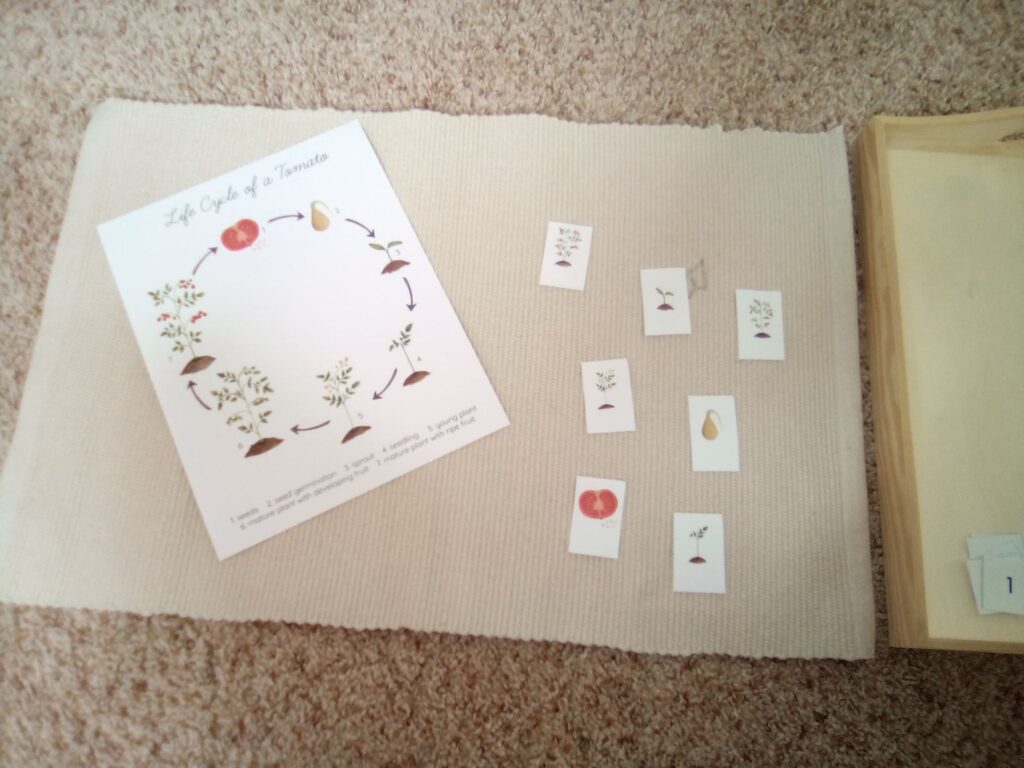
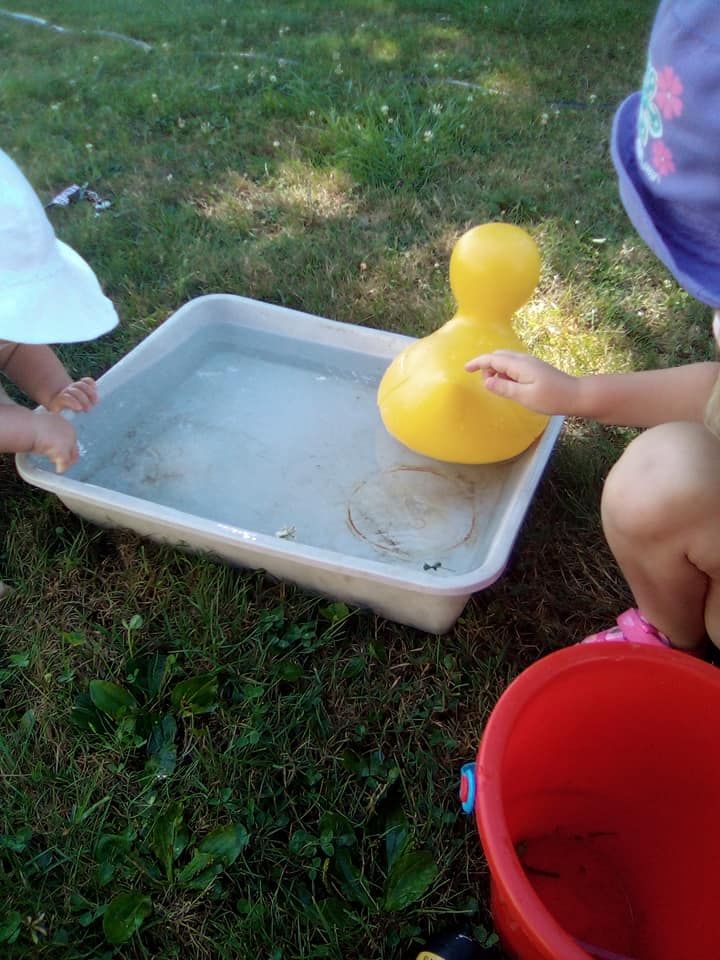
Bible
Our goal for 2-6 is to have a strong Biblical narrative foundation, an understanding of the Gospel, and to have some scripture memorized. We do hands-on play, story-telling, reading, and acting out the Bible Stories. We also use three part cards, story sequencing cards, and matching cards. We will even watch the Bible stories during our screen time. This year we focused on the following: Creation, Thankful Heart, Advent, Christmas, Getting to Know Jesus, Parables, Lent (mini focus), How to Be, The Fiery Furnace, St. Patrick’s Day/Trinity, Palm Sunday, Easter, 40 Days after Resurrection, Jacob’s story, and Joseph’s story. I may to a recap of what this looked like in our home to share a little more detail this summer.
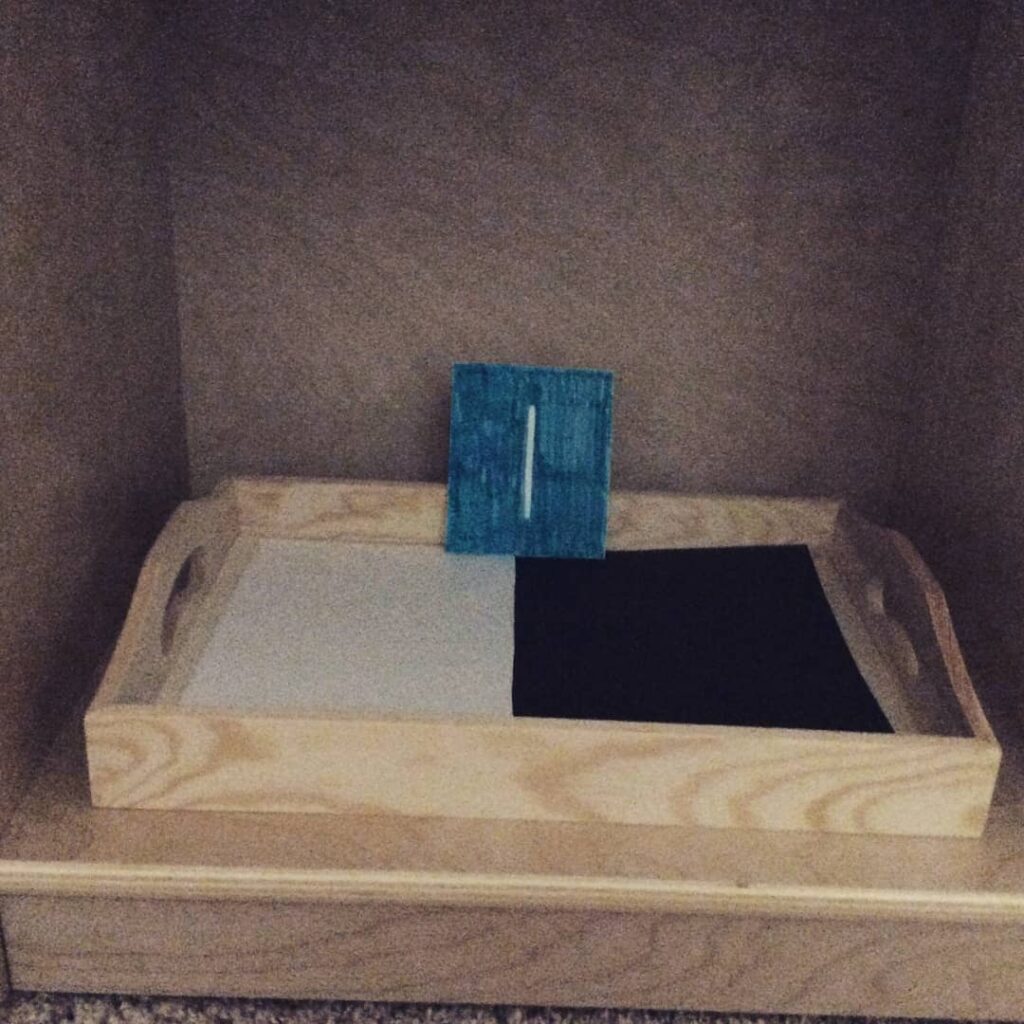
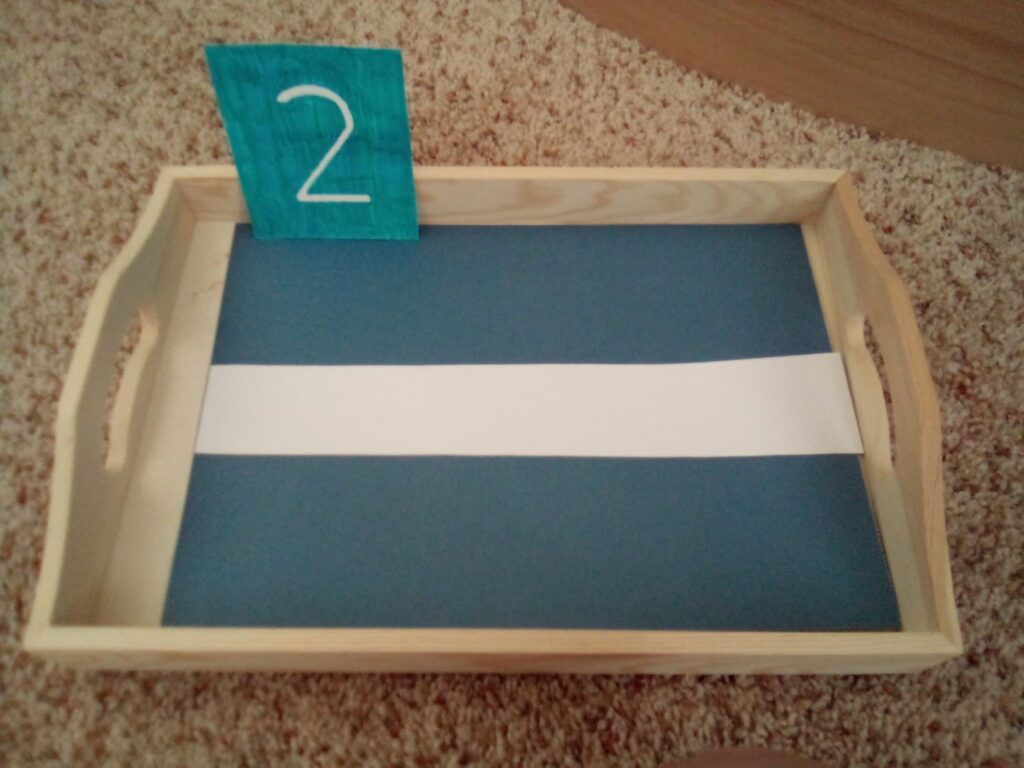
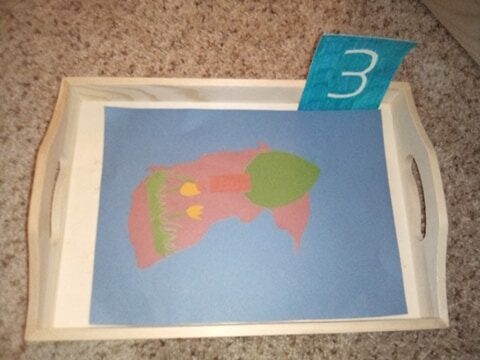
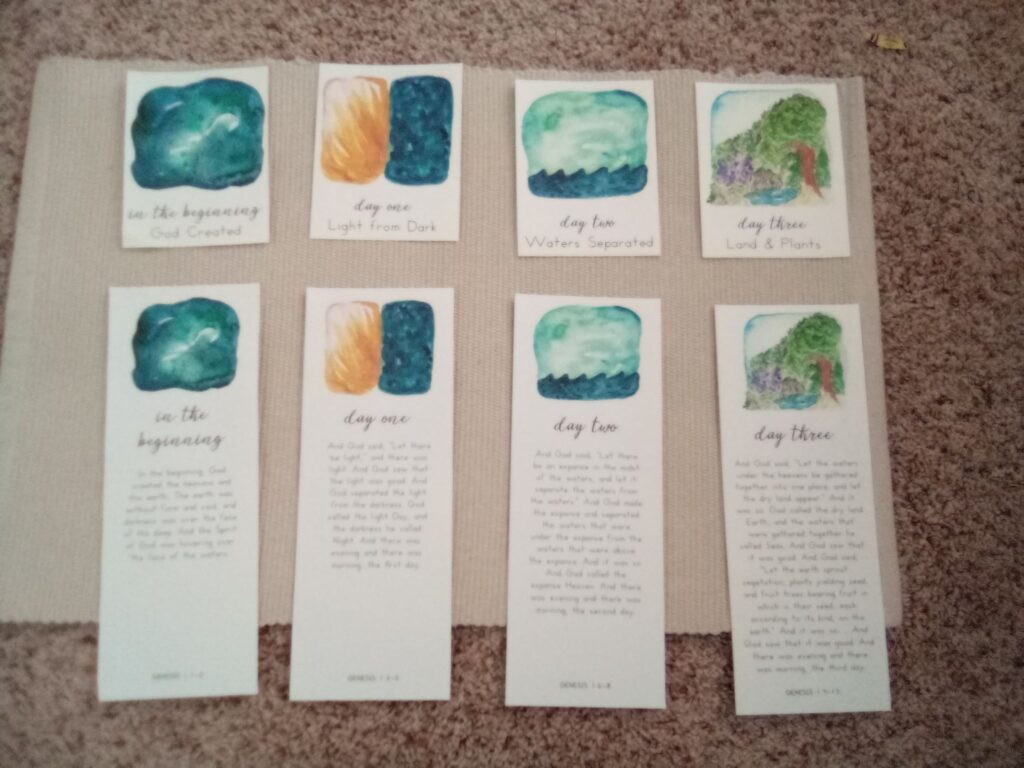
Themes
This year we did five different units. We’ve done a creation unit, a tomato unit, a dance unit, and a butterfly unit. With each theme, I try to incorporate each of the four main subjects (if I can!) and to delve as deep into the topic as my child is interested. The dance theme stayed on the shelves for months. I found that as we shifted from “tot school” to our first full year in the 3-6 Montessori Homeschool Classroom, we were lighter on unit studies. I don’t know if that is because of the additional materials, a deeper focus on individual themes that were of interest, or if it is a mix of the two. Perhaps it can merely be chalked up to leaning into the scope and sequence more? Regardless, my oldest loved the themes we did do. They weren’t all on my list going into the school year but isn’t that how things work with a child-led curriculum?
That’s our Year in Review for the 2020-2021 School Year. It was fun and incredibly special to be able to be home with my girls and play an active role in their learning journeys. They have grown so much! I am thankful to be called to homeschool my children.
I hope you enjoyed our overview of this past school year in our homeschool Montessori Preschool. Check out the 2019-2020 Year in Review to see what the end of “tot school” and the beginning of the the 3-6 Montessori Curriculum looked like in our home.